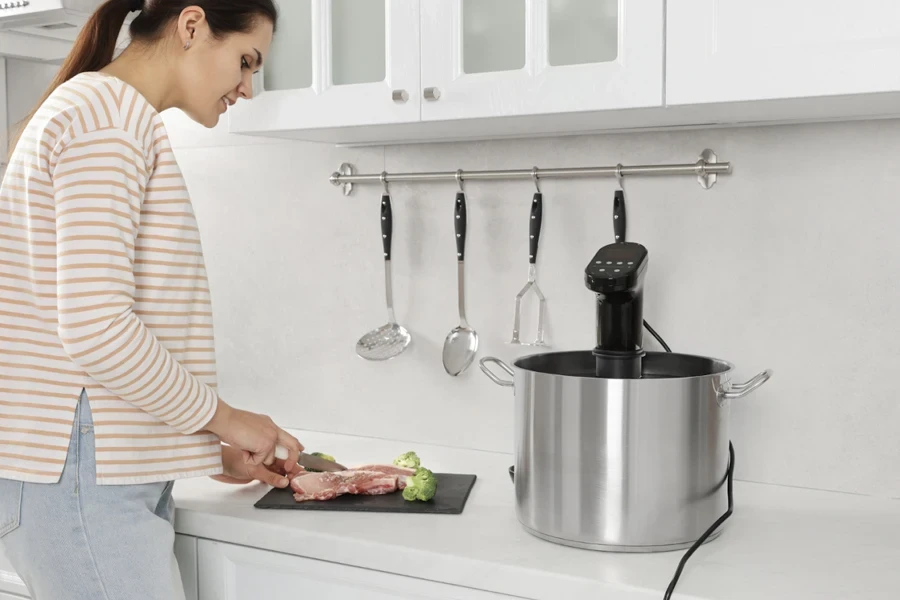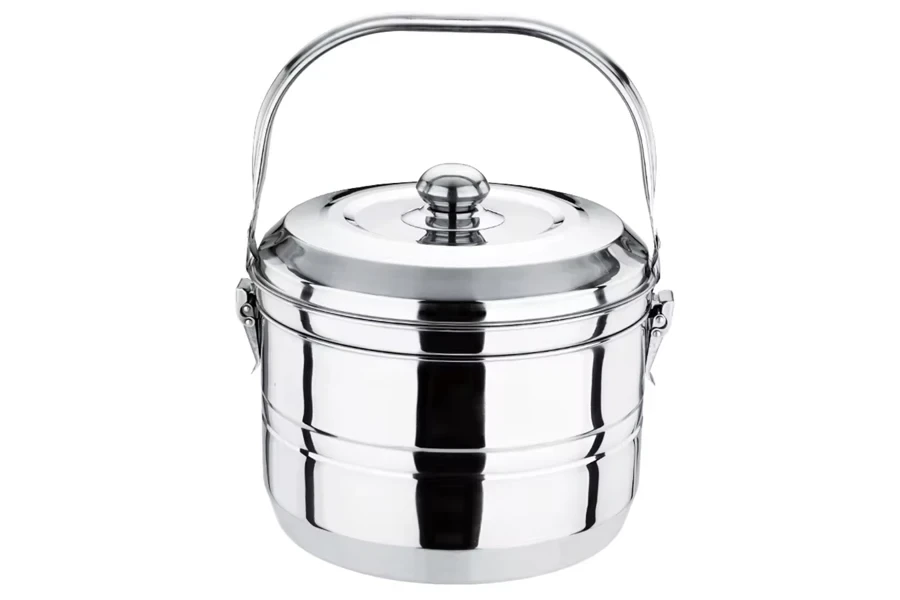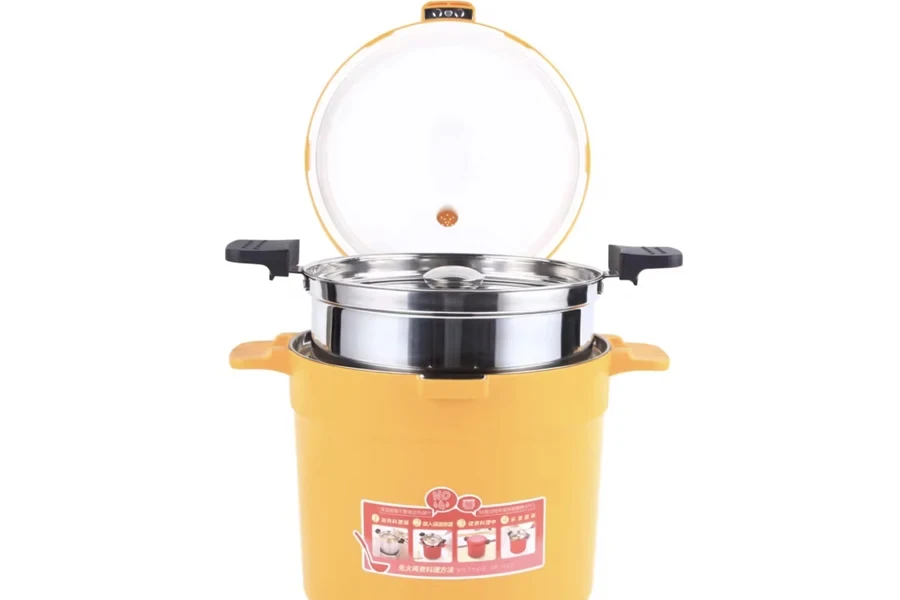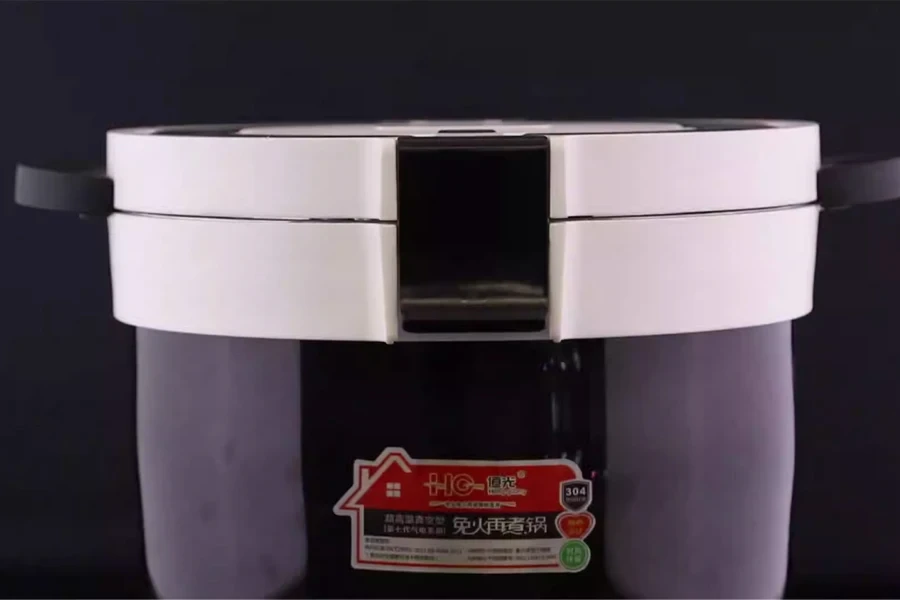Thermal cookers are super valuable because of their innumerable benefits over traditional cookers. Whether it’s a road trip or a picnic that requires food to maintain its temperature, thermal cookers do a great job of retaining heat without fuel—thus helping users save energy costs. That said, knowing how to choose profitable options that will sell could be tricky, especially to those who are new to this market.
Luckily, this article is aimed at helping sellers to make the right choice. So read on for our guide to selecting the best thermal cookers on the market in 2024.
Table of Contents
What are thermal cookers, and how beneficial are they?
What sellers must consider when selecting thermal cookers
Wrapping up
What are thermal cookers, and how beneficial are they?

Simply put, a thermal cooker keeps food cooking after consumers turn off the heat. How? They have designs that lock the heat inside the pot. But here’s the cool part: modern thermal cookers don’t just trap heat. They bounce it back into the food using infra-red magic.
Why is that beneficial? Well, the food won’t turn into a mushy mess from overcooking. And it’s a healthier way to cook! All those great nutrients stay locked inside so consumers can get maximum goodness in every bite. And forget about greasy stove tops or smoky kitchens—thermal cookers keep things clean and tidy.
But wait, there’s more! Consumers can take their cooking on the road. With a thermal pot, they can dish out piping hot meals at picnics or keep that potluck stew warm without breaking a sweat. And guess what? It’s not just for hot stuff. Thermal cookers can also keep cold things cool, like ice cream!
What sellers must consider when selecting thermal cookers?

Insulation type

Insulation is absolutely necessary for thermal pots! It keeps the heat around the pot, allowing it to keep the food hot or slowly and evenly cook it. But the thing is thermal pots can use different insulation types, meaning sellers must know how each one works before selling. Take a look at four of them below.
Foam insulation
This insulation type is similar to the soft foam commonly used in packaging. Although it has many advantages, like being lightweight and doing a decent job of trapping heat, foam insulation is not the cream of the crop. In truth, it’s not as effective at maintaining temperature for long.
Vacuum insulation
This insulation type is more similar to a double-walled thermos. Thermal cookers with vacuum insulation are super efficient at trapping heat, making them great for maintaining temperature for several hours.
Fiberglass insulation
Instead of foam or vacuum, this insulation type uses tiny glass fibers packed around the pot. Here’s the good part: it’s excellent at trapping heat and maintaining temperature. But there’s a catch—fiberglass insulation can get really heavy, especially compared to foam variants.
Reflective insulation
The last (but not the least) type is reflective insulation. This type uses materials like aluminum foil to bounce back into the pot, keeping its contents warm for longer periods. While it may not be as effective as vacuum or foam insulation, it still does a decent job at maintaining temperature, especially when manufacturers combine it with other insulation methods.
Size/capacity

How much food would consumers cook at once? That’s the question that determines the thermal cooker size consumers will choose. Choosing the right cooker size ensures cooks have enough space to do whatever they want. Typically, thermal cookers come in various sizes ranging from small to large.
Small thermal cookers may hold around 2 to 3 liters of food, perfect for cooking meals for one or two people. Then, there are medium-sized thermal cookers, which can hold around 4 to 6 liters of food. This size is great for cooking for a small family or preparing leftovers to enjoy later. Lastly, there are large thermal cookers, which can hold 7 liters or more of food. These are ideal for cooking large batches of soups, stews, or casseroles for bigger gatherings or meal prepping for the week ahead.
Number of inner pots

Think of inner pots like compartments in a lunchbox—they help consumers organize and cook different foods separately but all in one container. Hence, when choosing a thermal cooker to sell, businesses must consider the number of inner pots—it will affect consumers’ cooking flexibility and convenience.
Some thermal cookers come with just one inner pot, while others may have two or more. What are the benefits of having multiple inner pots? It allows consumers to cook different dishes simultaneously, which can be handy if they are preparing a multi-course meal or want to cook main and side dishes at once. It’s like having multiple burners on a stove to cook pasta in one pot while simmering sauce in another!
Furthermore, the number of inner pots can also affect how consumers use their thermal cookers for meal prep or storage. For example, if they have leftovers, consumers can store them in one inner pot while using the other for cooking something new. But that doesn’t mean thermal cookers with one inner pot are useless. In fact, they will suffice for consumers looking to cook smaller quantities or prefer simplicity.
Features

The features consumers may find appealing depends on their cooking preferences and lifestyle. If cooks enjoy experimenting with different recipes and cooking techniques, they may appreciate thermal cookers with more advanced features. But if consumers prefer simple, straightforward cooking, a basic model might be enough to meet their needs.
Regardless of what consumers prefer, one common feature popular in thermal cookers is a pressure-cooking function. This feature allows consumers to cook food faster by creating pressure inside the cooker, helping to tenderize tough cuts of meat and reduce cooking times for beans, grains, and other ingredients. Another useful feature is a timer or programmable settings. This feature allows consumers to set their thermal cooker to cook for the preferred time and automatically switch to a keep-warm mode afterward.
Weight and portability
Consumers want something easy to handle and transport, especially if they are cooking on the go or bringing dishes to potlucks or picnics. Lighter cookers are simply more convenient to lift and carry, especially if consumers need to move their cookers from the countertop to the stovetop or pack them in their car for a camping trip. Portability is also important if consumers use their thermal cookers outside the home frequently.
Whether camping, tailgating or simply cooking in a friend’s kitchen, a portable cooker makes it easier to enjoy home-cooked meals anywhere and anytime. Additionally, a thermal cooker’s size and shape can affect its portability. For instance, a compact and streamlined design is easier to pack and transport than a bulky cooker with protruding handles or accessories. But that’s only the case if consumers love moving around with their thermal cookers.
Wrapping up
With rising energy costs, consumers are prioritizing appliances that save them money. Thermal cookers, with their ability to retain heat and cook without continuous energy use, are one of the many products that fit perfectly in this trend. While classic thermal cooking is valuable, innovative features like digital timers, temperature control, and multiple inner pots will make these cookers even more attractive. Use this guide to catch the attention of new tech-savvy buyers or create exciting upgrade offers in 2024! Don’t forget to subscribe and catch more topics like this.




